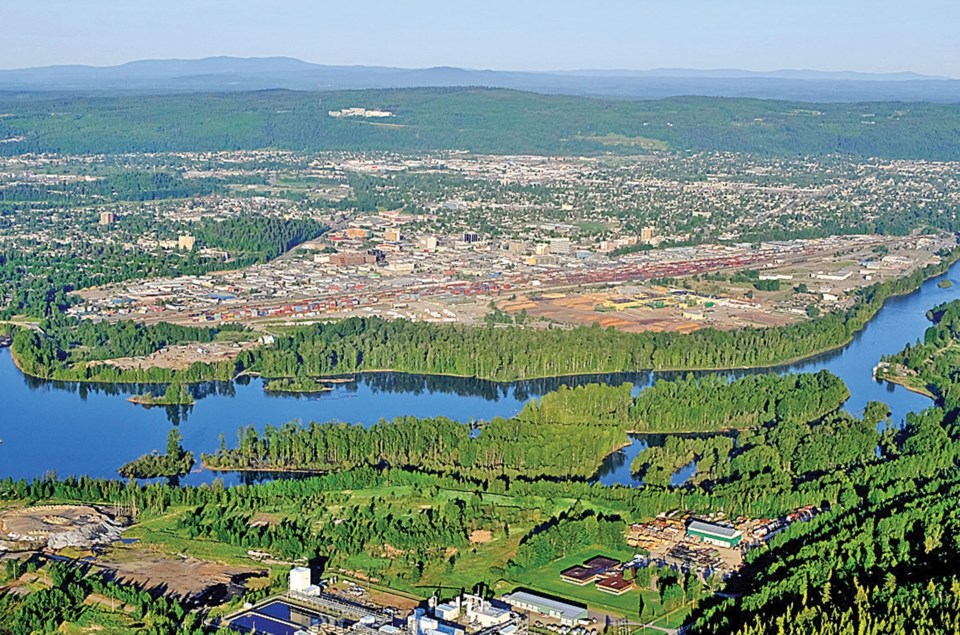The following column was submitted to our sister Glacier Media site, Alaska Highway News, from Evan Saugstad, former mayor of Chetwynd and current Fort St. John resident.
Who are we in the north?
As I have lived and worked across much of northern B.C. and Yukon, I thought answering this would be easy — until I sat down and put fingers to keyboard.
It would be nice and simple if the people of northern B.C. fit into a little box, so we could then say this is who we are, this is how we think, and this what we believe. That's just not possible, as those of us who live here know.
Rural and northern B.C. is diverse, certainly in opinions, lifestyles, beliefs, and politics.
For the uninformed, Vanderhoof is the geographic centre of B.C. I live north of that, and although Fort St. John has about 30,000 living in and around town, I tend to think of ourselves as rural, and not necessarily northern. Fort Nelson and Dawson Creek are northern.
Many of those who I regularly engage with think and consider B.C. to be two parts: urban and rural, not northern and southern. The Lower Mainland, southern Vancouver Island, and central Okanagan are urban. Rural is the rest.
That works for me, as when I write from a non-urban perspective, then much of I write about will apply across most of B.C. Perhaps not to those living in our Gulf Islands. I do understand they tend to think about things differently.
Long before I came to B.C.’s northeast — 1994, when I moved south from Yukon — and while I was attending high school in Hagensborg in the Bella Coola Valley, I heard a quote from then Premier Dave Barrett, B.C.’s first NDP Premier.
He was being asked by a reporter about his chances in an upcoming election. Dave went through area by area, and when he got to talking about the Peace River country, he said: “The Social Credit could run a fence post there, and we, the NDP still couldn’t win.”
Today, much the same analogy could be used to describe B.C.’s rural coast. The NDP could run a fish and the BC Liberals still couldn’t get elected.
Although we may have differing political views, that doesn’t seem to matter much when one talks about rural issues and solutions. We're concerned about preserving our community, our lifestyle, our environment and especially our jobs, having a place for our kids to grow up, and finding work close to home.
There might be differences in opinion on how to get there and about who will pay for it, but there’s not much difference on the underlying issues.
Northwest B.C. may not accept pipelines with the same ease as northeast B.C., and northeast B.C. may not agree with how coastal communities love their wolves.
Despite our differences, we get by. We figure it out.
I use the Northern Development Initiatives Trust as an example.
I have been part of that organization since before its inception, still serve on its Board, and was its Chair for many years. I still and always will hold the Trust dear to my heart for all the good it has brought rural B.C.
For those who have never heard of it, check it out. It's unique and one of the world’s best examples of a not-for-profit working to better peoples lives.
In 2004, then Premier Gordon Campbell and his cabinet created the NDIT as their response to the public backlash when his government sold BC Rail to CN. As an appeasement, $135 million dollars was given to us to further our economic development, to better our lives. Another $50 million was subsequently added when two more Trusts were created for B.C.’s southern interior and coast.
Not a lot of strings came attached with that money, other than the structure of the Board and participating member communities. Four regions, each with their advisory board and 13 Board members manage this Trust that encompasses two-thirds of B.C.
If we had chosen, we could have spent the entire endowment and then closed the doors. But we didn’t, and despite the belief by many cabinet members that we would not survive, we did.
Not only did the Trust survive, but it excelled, still does, is still growing, and still making rural B.C. a better place to live. The Board works as one, despite existing in a very politically divided province and coming from distinct regions.
It wasn’t always easy, and it took work, but despite our regional and political differences, we come together for the benefit of us all. We learned that despite our difference, we can work to common goals.
This is how I view rural B.C.. Although we have differences, we also have common solutions, we do have the ability to get along.
I’m not sure I can say the same about the rural-urban divide.
As hard as we try, I’m not sure we will ever convince our big city cousins that we can look after ourselves, our lands and resources, our environment and our residents. We just need a few of our tax dollars to come back and keep us going.
Some day, post-COVID, it will be nice to have city folk come for a visit and learn a wee bit about who we really are.

